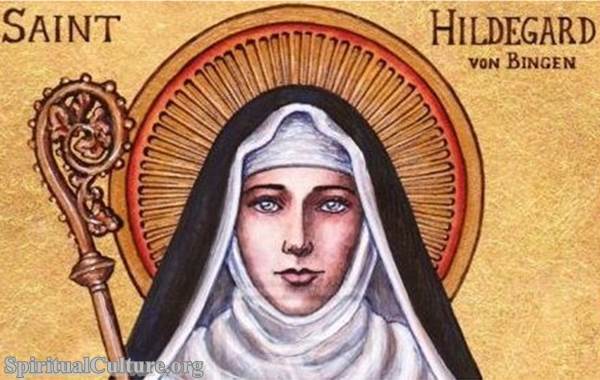The path to sainthood is not reserved for the perfect, the powerful, or the publicly praised. It is a journey of grace, mystery, and love — a road walked by those whose lives have reflected something of the divine amidst the ordinary. Across the centuries, the Church has canonized saints not to create an elite class, but to hold up luminous examples of what a human life looks like when fully given to God.
As Spiritual Culture, we invite you into this sacred process: to explore not only who can become a saint, but how the Church discerns, honors, and celebrates sanctity. Behind each saint’s title is a profound testimony of faith, sacrifice, and transformation that speaks to the heart of our human and spiritual longing.
In this article, we will journey through the steps of canonization, the qualities that define a saint, and why this tradition continues to inspire millions — not as a relic of the past, but as a living call to holiness.
The Meaning of Sainthood
What Is a Saint?
In the Christian tradition — particularly within the Catholic and Eastern Orthodox Churches — a saint is someone who has lived a life of extraordinary holiness and is believed to now be in Heaven, interceding for those still on Earth. The word comes from the Latin sanctus, meaning “holy.” But holiness is not about perfection; it is about communion with God.
Saints are considered witnesses to the Kingdom of God, not because they were flawless, but because they responded radically to God’s grace, often in difficult and even hostile circumstances.
“Be holy, for I the Lord your God am holy.” — Leviticus 19:2
This call is universal. Every baptized person is called to be a saint — not in name, but in truth. Canonized saints are those whom the Church publicly recognizes as having fulfilled this call in a heroic and enduring way.
The Canonization Process: A Sacred Journey
Step 1: A Life Worth Noticing
The process begins not with miracle claims or supernatural visions, but with the memory of a life that left a mark — someone who lived with such love, humility, and courage that people are moved to say: “They were truly holy.”
After a person dies, typically five years must pass before the formal process begins (though exceptions have been made, such as with Mother Teresa and Pope John Paul II). This waiting period allows emotions to settle and history to speak more clearly.
A local bishop can then open a cause for canonization, and the individual is titled “Servant of God.”
Step 2: The Diocesan Investigation
This is where the Church becomes both historian and theologian. A thorough diocesan inquiry is conducted:
- Eyewitnesses are interviewed
- Writings and letters are examined
- The person’s life is studied for “heroic virtue” — love, faith, hope, humility, and other cardinal virtues lived with depth and consistency.
This phase is profoundly human and spiritual: it asks, “Did this person live the Gospel?”
Once completed, the findings are sent to the Vatican’s Dicastery for the Causes of Saints.
Step 3: Declaration of “Venerable”
If the Vatican theologians and historians approve, the Pope may declare the individual “Venerable” — recognizing that they lived a life of heroic virtue.
At this point, no miracles are required, but the Church affirms that the person is a worthy model of Christian life.
This declaration is not an act of worship, but of reverence — an acknowledgment that this person’s example is valuable for the faithful.
Step 4: Beatification — The First Miracle
To move forward, the Church typically requires one miracle, attributed to the person’s intercession. Miracles serve as divine confirmation — a heavenly seal of approval.
Most often, this miracle is a medically unexplainable healing — one that:
- Occurs after prayers for the individual’s intercession
- Is instantaneous, complete, and lasting
- Cannot be attributed to treatment or natural recovery
Once verified by a panel of doctors and theologians, the person may be beatified and given the title “Blessed”.
Beatification allows for local or regional veneration, often in the person’s home country or religious order.
Step 5: Canonization — The Second Miracle
A second miracle is usually required before canonization, unless the person is a martyr (someone who died for the faith), in which case one miracle after beatification suffices.
When this final miracle is confirmed, the Pope may declare the person a Saint in a solemn public Mass — often in St. Peter’s Basilica in Rome.
From that point on, the saint may be universally venerated and included in the Liturgical Calendar.
Who Can Become a Saint?
Holiness Has No Borders
The Church teaches that any baptized person who lived a life of heroic virtue may be canonized. This includes:
- Men and women
- Clergy and laypeople
- Rich and poor
- Married, single, celibate
- Converts, mystics, martyrs, scholars, peasants
From the early martyrs of Rome to modern saints like Oscar Romero, Therese of Lisieux, or Charles de Foucauld, sainthood reveals a profound truth: God’s grace can sanctify any life.
“There is no saint without a past, and no sinner without a future.” — St. Augustine
The Role of Miracles: Signs of God’s Favor
Why Miracles Matter
In a skeptical age, the requirement of miracles can seem out of place. But in the Church’s understanding, miracles are not rewards but signs — evidence that the person is in communion with God and able to intercede on our behalf.
They are not magical; they are sacramental. They remind us that holiness is not just a personal achievement, but a relationship with the Living God that continues beyond death.
Examples of Canonization Miracles
- St. John Paul II: A woman healed from Parkinson’s disease
- St. Teresa of Calcutta: A man cured of brain abscesses
- St. Damien of Molokai: A girl healed of terminal lung illness
These miracles were not automatic; they were investigated rigorously, with both science and faith in conversation.
Saints: Not Statues, but Stories
Lives that Teach, Challenge, and Heal
Each saint is a unique mirror of God’s light — their story revealing a facet of divine love, justice, or mercy.
Some were martyrs, like Perpetua and Felicity.
Some were contemplatives, like John of the Cross or Hildegard of Bingen.
Others were revolutionaries of love, like Dorothy Day (whose cause for sainthood is underway).
Their holiness often cost them everything — comfort, reputation, even life — and yet they remained radiant.
Why Saints Still Matter
In a fragmented and fast-paced world, saints offer more than nostalgia; they offer hope. They show us:
- Holiness is possible, even in broken times
- Love can be lived with integrity
- Faith still transforms lives
Saints do not replace Christ; they point to Him. They are fellow pilgrims, older brothers and sisters who have finished the race and now cheer us on.
“Since we are surrounded by so great a cloud of witnesses, let us also lay aside every weight… and run with endurance.”
— Hebrews 12:1
Reflect and Reimagine
The process of canonization is not a checklist, but a discernment of holiness — a sacred journey that honors human lives touched by divine grace. It reminds us that the call to sainthood is not reserved for the few, but echoes in every heart.
Who can become a saint? Anyone who says yes to love, to sacrifice, to the mystery of God’s will — again and again.
As Spiritual Culture, we encourage you to look at your own life through this lens: not of perfection, but of purpose. Who are you becoming? What does holiness look like in your vocation, your relationships, your daily decisions?
May the stories of the saints awaken your own. May they stir your soul with the truth that sanctity is not out of reach — it begins now, wherever you are.
And may you walk boldly in the direction of the divine.



